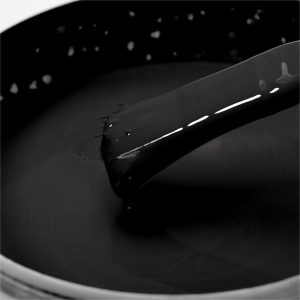
What are the quality parameters of carbon black?
2023-09-13
Carbon black is an important industrial raw material with a wide range of applications. Carbon black quality parameters are critical to product performance and quality. This article will introduce the main quality parameters of carbon black and their impact on the product.
Specific surface area: The specific surface area of carbon black reflects the influence of its particle size, shape, dispersion and other factors on the surface area. The larger the specific surface area, the smaller the carbon black particle size, the more porous the shape, and the better the dispersion. The larger specific surface area can provide more surface contact area and improve the strength, conductivity and adsorption performance of the product.
Structure: The structure of carbon black mainly refers to its microscopic crystal structure and pore structure. Common structural types include F-type (aromatic core), P-type (polycore), G-type (heterocyclic core) and M-type (mixed type). Different structural types of carbon black have different strengthening effects, processing properties and wear resistance. Choosing the appropriate structure type can meet the product's requirements for strength, processing performance and durability.
Chroma: The chroma of carbon black mainly includes gray and green. Grayscale reflects the depth of carbon black color, while greenness reflects the hue of carbon black color. Different products have different requirements for chroma. Some applications have no special requirements for hue, while others require precise control of chroma to meet specific appearance requirements.
Density: The density of carbon black refers to the space occupied by unit volume of carbon black. Density affects the calculation of the amount of carbon black in the formula, and is also directly related to the physical properties of the product. High-density carbon black can improve the strength and hardness of the product, but may increase the weight of the product.
Agglomeration degree: The agglomeration degree of carbon black refers to the degree of aggregation between carbon black particles. Lower agglomeration means better particle dispersion, which is beneficial to product suspension and processing properties. High levels of agglomeration can lead to product inhomogeneities and processing difficulties.
Ash: Ash is the non-carbon component of carbon black, including impurities and incomplete combustion residues. Excessively high ash content may reduce the processing performance and product quality of carbon black, and may also cause environmental pollution.
Metal content: The metal content in carbon black may come from the raw materials or contaminants in the production process. The metal content has an impact on the physical properties of carbon black such as electrical conductivity and thermal conductivity. High metal content may cause product instability and corrosiveness.
By controlling the above quality parameters, manufacturers can select appropriate carbon black varieties based on customer requirements and application needs, and adjust the formula to achieve the required product performance and quality. At the same time, we strictly follow relevant standards and specifications for quality control to ensure that products meet market requirements and meet the requirements of environmental protection and sustainable development.
What role do the quality parameters of carbon black play?
Affect product performance: The specific surface area, structure and density of carbon black will directly affect the mechanical properties, conductivity, adsorption performance and other characteristics of the product. By selecting appropriate carbon black quality parameters, the hardness, strength, flexibility, wear resistance and other properties of the product can be adjusted to meet the product performance requirements of different application fields.
Adjust formulation and cost: Carbon black is an important filler in many rubbers, plastics, inks, coatings and other materials. By adjusting the quality parameters of carbon black, manufacturers can optimize formulations and achieve cost control based on product demand and economic factors. For example, choosing the appropriate specific surface area and structure type can reduce the amount of carbon black and reduce raw material costs.
Improved processing properties: The agglomeration and dispersion of carbon black are critical to product processing. Lower agglomeration and good dispersion can improve the compatibility of carbon black with matrix materials and improve product processing properties, such as flowability, extrudability and moldability.
Controlling Colorimetric and Appearance: The colorimetric parameters of carbon black are particularly important for certain applications, such as rubber products, pigments and inks. By controlling chromaticity parameters such as grayscale and greenness, you can ensure that the product has the required color depth and hue to meet the user's appearance requirements.
To sum up, the quality parameters of carbon black play a key role in product design, production process and market demand. By rationally selecting and controlling the quality parameters of carbon black, manufacturers can achieve product customization, performance optimization, cost control and environmental sustainability requirements.
The above is the complete content of carbon black quality parameters. After reading this, if you have any questions about this content, please feel free to consult the editor for answers.
Previous page:How do you test carbon black?
Next page:DERY: Your trustworthy supplier of high-quality carbon black

